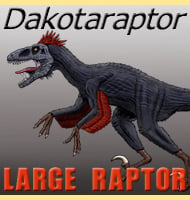Trimucrodon
In Depth Originally uncovered during the 1960s, the holotype teeth of Trimucrodon were originally thought to be from a small mammal. In 1973 however Richard Thulborn recognised that the teeth were actually from a small dinosaur, though his paper describing them and naming the genus did not actually get formally published until 1975. Today Trimucrodon … Read more
